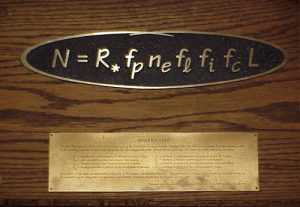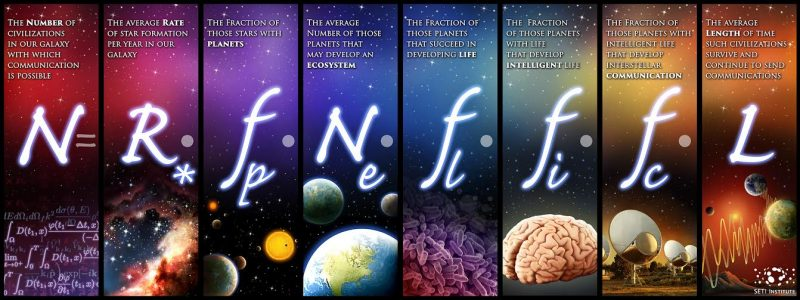It was 1961 at the Green Bank radio telescope. Frank Drake, a young researcher at the observatory, was looking at a blank sheet to figure out a meeting agenda for America’s foremost thinkers on the question: Are we alone in the universe?
A year earlier, Frank carried out the first SETI (Search for ExtraTerrestrial Intelligence) experiment – and met success. But the signal came from closer to home – a satellite. Still, it proved radio telescopes detect the kind of narrow-band signal that would be expected from an intelligent civilisation.
Astrobiology had barely been considered a discipline but encompasses many questions to which there were no answers in 1961: Do other stars have planets like our own sun? And if they do, are some habitable (capable of supporting life)? Does life always rise from microbes to intelligence? Are we alone in the cosmos? Frank scribbled down these and other questions and turned them into an equation. The meeting room has on its door, in gold lettering, the meeting agenda in the form of what we know today as the Drake Equation:
Many believe that the Drake Equation is predictive – that we need the right numbers to plug in like an ordinary mathematical equation to get an answer. But it is not that simple. Getting a precise number for each factor gets more challenging as we move to the right of the equation. The Drake Equation – the meeting agenda for the 1961 SETI meeting – is probabilistic.
What are the factors in the Drake Equation? See the image below.
What are the probabilities of each factor? The more we know about a factor, the more the uncertainty is reduced. And the good news is that we know a lot more than in 1961 about some of the factors. For example, we know other stars do indeed have other planets, but, on the other hand, we have not found a solar system that is similar to our own. We know life can exist far outside the comfortable pocket that supports intelligence, opening up the possibility of simple microbial life elsewhere in the solar system. However, though those worlds like Mars, Venus, Europa, Enceladus and Titan are in the equivalent of our cosmic backyard, we have yet to detect any life outside the biosphere of the Earth.
While we have a better idea of the numbers in some of the factors than in 1961, an enigma appears as we move to the right. It is one highly relevant to the future of life on Earth: What is the lifetime of an intelligent communicating civilisation?
Drake, who passed away in 2022, understood how challenging the L factor was and decided the equation could be shortened to N = L (the number of communicating civilisation depends on the lifetime of those civilisations. He embodied it in his car numberplate:
While the Drake Equation is probabilistic, it is still the best tool to order our thoughts about the puzzle pieces in the quest to answer the question: Are we alone in the universe? It is also salutary to guess at numbers to estimate L. Over many years, students in Frank’s classes tried. The average estimate for L did not change – it was always 10,000 years.
Food for thought.

 Image credit: SETI Institute
Image credit: SETI Institute